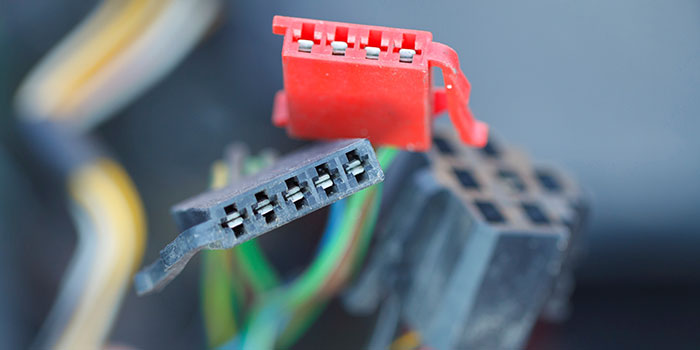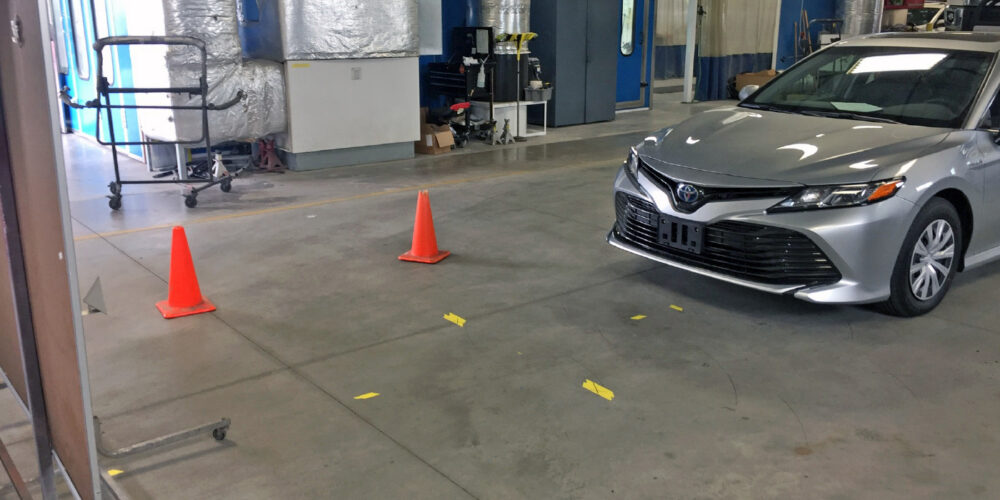 When it comes to electricity, there are two potential energy sources you have to keep in mind. One, being the positive side, and the other, the negative side. Just like a magnet, these two opposite forces react the same way. That is, two positives or two negatives will not meet, while a positive and a negative source of energy will attract each other. This attraction will continue until all the potential energy is equalized.
When it comes to electricity, there are two potential energy sources you have to keep in mind. One, being the positive side, and the other, the negative side. Just like a magnet, these two opposite forces react the same way. That is, two positives or two negatives will not meet, while a positive and a negative source of energy will attract each other. This attraction will continue until all the potential energy is equalized.
Looking at a lightning bolt, the potential energy is of a positive nature, and of course, what does it want to do? It wants to find its counterpart … negative. Which is good-old terra firma, or in other words, ground. In a car, the positive energy wants to do the same thing – find ground. And since a car is more or less its own little portable planet, the car chassis itself is the ground. In the modern car, the chassis ground is negative; however, if we go back a few decades, you’ll find some vehicles with positive chassis grounds. For all intents and purposes the concept is the same: provide a path to allow the energy to reach that equality state.
Defining a Chassis Ground
A chassis ground basically means that the chassis itself is the conduit for that potential energy. That also means that anything – be it metal or some other material attached to the chassis that will conduct electrical potential – is a potential ground source. So, the importance of the chassis ground can’t be overlooked when diagnosing either a voltage drop or lack of current flow in a system that needs a path to a ground source. In most cases, the wiring diagram will show the locations of these grounds or where a wire eyelet is attached to the chassis. Most manufacturers will use the universally excepted ground symbol or assign a letter and number combination to the ground lead and then list these ground locations in the locator section.
A bad chassis ground is without a doubt one of the most common problems in today’s vehicles – since most of these ground leads are exposed to the elements and are in a spot where vibration, movement and fluid contamination can weaken or break the connection all together. Obviously, a weak ground can result in a voltage drop, but the lack of a ground can present even more issues. Once the ground path is no longer available for certain electrical circuits, the first thing the positive energy wants to do is find another way to get to the ground. This could mean a backfeed through another circuit. A weak connection may allow the system to function, but not to its designed potential. An example of this is headlights that come on, but are not very bright, or a blower motor that seems to run at half speed. Tracing these ground faults can be a challenge, but you can make the job easier if you follow a few key steps.
Ground Circuit Diagnostics Simplified
As with any repair, it all starts with verifying the complaint, be it an intermittent situation or a full-on failure. The next step that I tend to go for is the wiring diagram. I’d like to know how and where the circuit I’m testing gets its powers and grounds. Once I’ve got that sorted out, I’ll do a quick check of the connections. Of course, paying close attention to the ground connections. Any sign of corrosion or frayed wiring will need to be taken care of before proceeding any further. It’s not uncommon to have a braided ground strap or wire that has only a few strands left holding it together cause a voltage drop in the circuit.
The next thing to do is to actually test the ground signal with the tools of your choice. Since I prefer to keep things simple, I generally will start with a test light. Placing the test light on a good positive source of battery voltage, I’ll probe the connection of the ground leads. (Never stab the wire. Always go to the connector.) Do this before you disconnect anything. The idea is to see if there is or isn’t a completed circuit from positive to the negative source. If your test light or probe is on positive, and you make a good clean contact with the negative wire, the test light will light up. If it doesn’t, you haven’t completed the path.
Another good way is to have your test light attached to a good chassis ground and probe the ground lead at the affected circuit. If the path is broken, the test light will light up because the positive electricity has made its way through the circuit and is still looking for that ground signal. That “ground” wire is no longer grounded. This is a handy test when you’re under a dash and trying to find a good source of a positive signal to test it – as I described previously – and it requires the efforts of a contortionist to find one … which ain’t me!
Of course there are a lot of tools, such as meters, scopes and other various probes, that can make the job easier for you. It really depends on what you feel most comfortable with. It really comes down to which method is going to get the results the quickest in a given the situation, or the location, or the ease of accessibility.
Sensor and Signal Grounds
There are other forms of a ground we should mention – the sensor or signal ground. Yes, they are grounds, but they are not directly attached to the chassis as the main ground leads would be. They are a ground signal generated by a circuit in a computer system. The computer controls the signal by various inputs it receives and sends out a ground signal at the appropriate time and strength depending on the circuit it is designed for. A lot of times this ground signal is momentary or can be turned on and off in milliseconds by the computer, such as in the case of duty cycles for solenoids or fuel injectors.
Some can be just a few volts, while others will be battery voltage. These sensor grounds can be read with a basic test light in some instances, but the best method is with a scope or scanner. At this point, you’ll need a bit more information than you’ll find on a wiring diagram. You’ll need the diagnostic procedures to find the correct values in order to know what you’re seeing on the scope or scanner is correct. If the information isn’t available in the diagnostic procedures, there are several websites and companies that provide libraries of known-good scope patterns, such as iATN, Autonerds, Identifix and many more. These sites can be invaluable to you, and I certainly encourage using them.
The main thing to keep in mind is not to overlook the ground signal as the source of the problem. Sure, positive connections can get hot, melt and cause a voltage drop just as much as the negative side. But, performing your diagnostics on both the negative and the positive sides of the potential energy source for that given circuit is going help keep you grounded with some excellent diagnostic skills.













